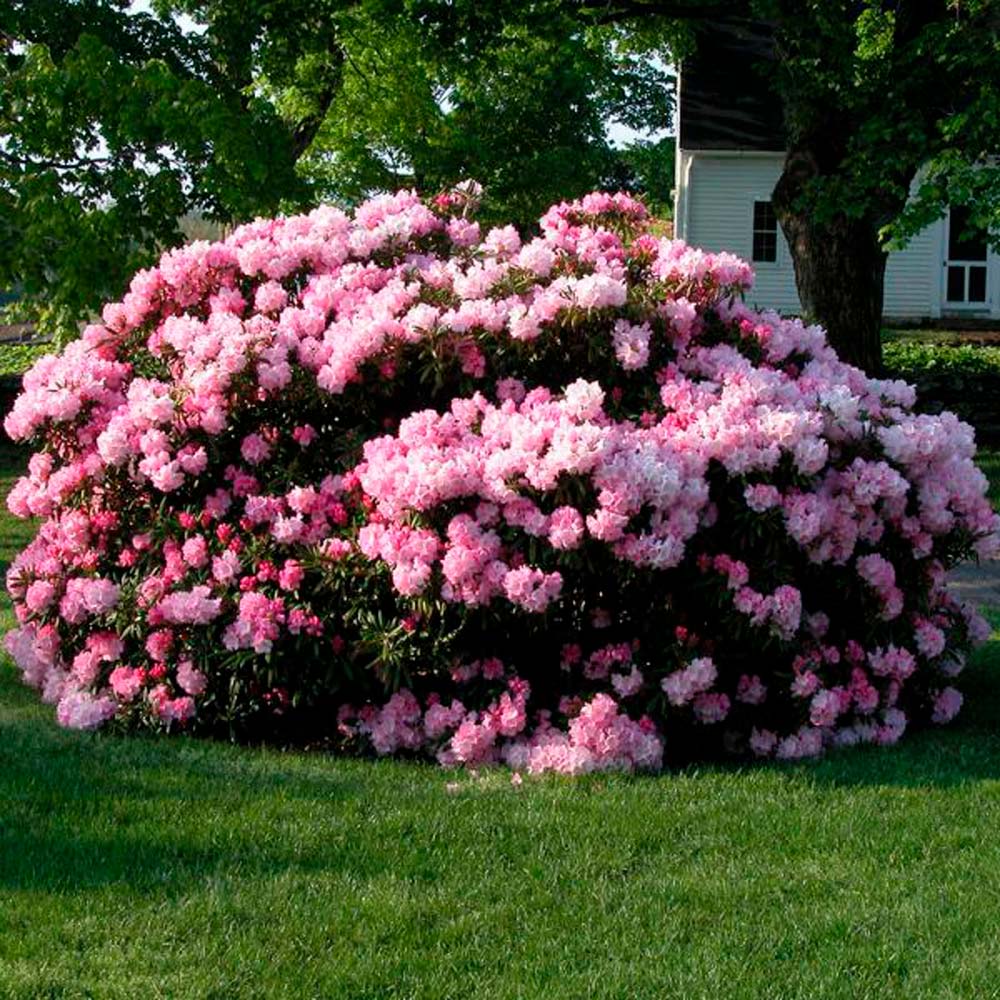8 Ways To Get Your Rhododendron to Bloom More
Encourage your rhododendron to produce more vibrant blooms

Rhododendrons are beloved for their stunning, colorful blooms that can brighten any garden. However, if your rhododendron isn’t producing as many flowers as you’d like, it can be frustrating. Blooming issues are often the result of improper care, environmental stress, or nutrient deficiencies. Fortunately, with the right adjustments, you can encourage your rhododendron to produce more vibrant blooms year after year.
Here’s a comprehensive guide to help you get your rhododendron to bloom more.
1. Plant in the Right Location
The location of your rhododendron plays a crucial role in its ability to produce flowers.
Tips:
- Light: Rhododendrons thrive in partial shade. Too much shade can limit blooms, while excessive sun can stress the plant. Morning sun with afternoon shade is ideal.
- Soil: Rhododendrons need well-draining, acidic soil with a pH of 4.5–6.0. Alkaline or poorly draining soil can hinder bloom production.
- Shelter: Protect rhododendrons from strong winds, which can dry out buds and leaves.
How to Fix It:
- Test your soil pH and amend with sulfur if necessary.
- If the location is too shady or sunny, consider transplanting your rhododendron to a better spot during its dormant season.
2. Water Consistently
Rhododendrons are shallow-rooted plants that require consistent moisture, especially during dry periods.
Tips:
- Water deeply and evenly to keep the soil moist but not waterlogged.
- Use mulch to retain soil moisture and protect the roots.
How to Fix It:
- Water regularly during the growing season, particularly in the spring and summer when the plant is forming buds for the following year.
3. Fertilize Properly
Nutrient deficiencies can prevent rhododendrons from blooming. However, over-fertilizing can lead to lush foliage at the expense of flowers.
Tips:
- Use a fertilizer formulated for acid-loving plants, applying it in early spring and after flowering.
- Avoid fertilizers high in nitrogen, which encourages leaf growth over blooms.
How to Fix It:
- Apply a balanced fertilizer (low in nitrogen) in early spring and again after blooms have faded to support bud formation for the next year.
4. Prune Correctly
Improper pruning can reduce or eliminate blooms, as rhododendrons develop flower buds on old wood.
Tips:
- Prune immediately after the plant finishes blooming to avoid cutting off next year’s buds.
- Remove dead, damaged, or overcrowded branches to improve air circulation and overall health.
How to Fix It:
- Avoid heavy pruning late in the growing season, as this will remove next year’s buds. Focus on light shaping and deadheading spent flowers.
5. Deadhead Spent Blooms
Removing spent flowers, known as deadheading, redirects the plant’s energy toward bud formation for the next blooming season.
Tips:
- Gently pinch or cut off the faded blooms without damaging the emerging new growth just beneath them.
- Perform deadheading as soon as the flowers fade.
How to Fix It:
- Incorporate deadheading into your regular garden maintenance to promote more blooms next year.
6. Protect from Winter Damage
Cold temperatures and frost can damage flower buds, leading to fewer blooms in the spring.
Tips:
- Mulch around the base of the plant to insulate the roots.
- Cover the plant with burlap or frost cloth during extreme cold or frost events.
How to Fix It:
- Protect young or sensitive rhododendrons from harsh winter conditions, particularly in exposed areas.
7. Address Pests and Diseases
Pests and diseases can weaken rhododendrons and reduce their ability to bloom. Common problems include:
- Pests: Lace bugs, aphids, and spider mites can damage leaves and weaken the plant.
- Diseases: Root rot, leaf spot, and powdery mildew can stress the plant and hinder bloom production.
Tips:
- Inspect your plant regularly for signs of pests or diseases.
- Treat infestations with insecticidal soap or horticultural oil.
- Remove and dispose of infected leaves or branches to prevent the spread of diseases.
How to Fix It:
- Take prompt action to control pests and treat diseases, ensuring your plant remains healthy enough to produce blooms.
8. Provide Seasonal Care
Rhododendrons require specific care throughout the year to ensure abundant blooms.
Tips:
- Spring: Fertilize and water regularly to support new growth and blooming.
- Summer: Water deeply to help the plant form buds for the following year.
- Fall: Protect the plant from frost and remove debris to prevent diseases.
- Winter: Mulch and cover the plant as needed to protect it from cold damage.
How to Fix It:
- Follow a year-round care schedule tailored to your rhododendron’s needs.
9. Choose the Right Variety
Some rhododendron varieties are more prolific bloomers than others. Choosing the right variety for your garden conditions can make a significant difference.
Tips:
- Select varieties known for abundant blooms, such as Rhododendron yakushimanum or Rhododendron catawbiense.
- Ensure the variety you choose is hardy in your climate.
How to Fix It:
- Research and plant varieties suited to your local climate and garden conditions.
Conclusion
With the right care and attention, your rhododendron can produce a stunning display of blooms year after year. By focusing on proper planting, watering, fertilizing, pruning, and protecting your plant from environmental stress, you’ll encourage healthier growth and more abundant flowers.
If you need help maintaining your rhododendrons, Ascent Yard Care offers expert planting, pruning, and fertilizing services to keep your garden thriving. Contact us today for professional gardening services in Victoria, BC, and let us help you achieve the vibrant rhododendron blooms you’ve been dreaming of!
